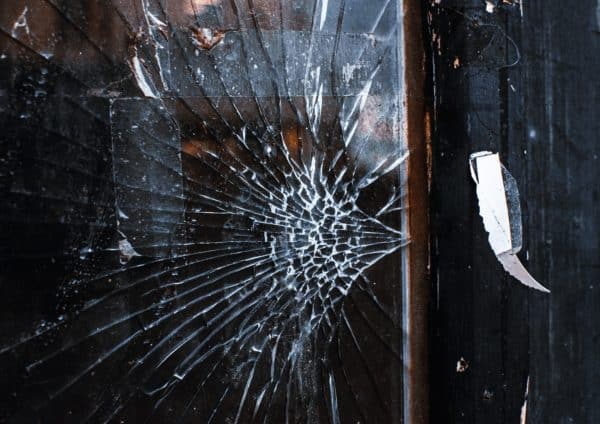28 February 2020, by Juanita Olaya Garcia –
This blog first appeared on the Corruption in Fragile States Blog.
The UNCAC Coalition is working to advance discussions around the inclusion of victims and their compensation in corruption cases, including through a new working group to facilitate discussions among civil society experts. If you want to become involved, please send us an email: email hidden; JavaScript is required.
Recently, Airbus, a European aircraft maker, announced a USD 4 billion settlement with US, UK, and France authorities. They resolved, among other things, their “investigations into bribery and corruption,” which involved Airbus’s activities in about 20 other countries. Regretfully, as we see all too often, these settlements will not include reparations to the people or communities affected by the bribery and corruption. Despite early and persistent requests, these victims were left out of the bargain.
The right to reparation is a basic legal principle. It is also a keystone of social coexistence: what gets broken through human intervention needs to be repaired. Reparation is common in many areas where the damage suffered is collective like, for example, environmental damages, human rights abuses, and consumer protection cases. It is puzzling that reparation is not a common practice for corruption cases as well. It is, however, explicitly addressed in the United Nations Convention against Corruption (UNCAC) Article 35, which mandates for provisions to enable compensation for damages emerging from corruption.
I will discuss here why reparation in corruption cases is important, particularly with trans-national corruption involving fragile states, and to what extent it is currently being implemented in practice.
Why are reparations necessary?
Collective reparation in cases of corruption is necessary for several reasons:

- It goes hand in hand with deterrence. Those familiar with the broken glass effect know that crime engenders crime, injustice engenders injustice. Reparation makes it clear that what was damaged is worth repairing. It, therefore, taps into social norms that need to be changed or reinforced.
- It communicates the importance of public good. Corruption is an attack on the common interest and reparation conveys this message directly to both, affected communities and perpetrators. This message is often lost in the way of enforcement, where the focus of law enforcement and settlements is only on identifying and jailing the culprits. This is mostly what makes the news, rather than the damage done to the affected community. The message is also lost when the focus is only on prevention, which focuses on institutional design and operation. In both situations, the consequences of corruption are ignored: the hospital is still ill-equipped, the bridge has fallen, or the taxpayers’ money is still lost.
- It completes the administration of justice. In other words, reparation makes the big difference between administering law enforcement and achieving justice. Putting those responsible for corrupt acts in jail addresses only part of the problem if the hospital is still not working or the stolen money still hasn’t reached the community it was intended for.
- The funds made available through reparation can be transformative for affected communities if used to address the actual problem around which the corruption occurred. For example, if a corruption case involving the embezzlement of funds from a public service delivery project, reparations from that settled case returned to the same sector could be transformative for that community. As it stands, however, the lost resources are not returned to the community. This is an essential consideration in transitional justice experiences, like in Colombia, for example.
- Reparation generates trust between citizens and their institutions, as it reinforces the rule of law, focuses on the delivery of institutions, and (to make the point again) ultimately brings justice to affected citizens. Enforcement alone falls short of generating trust if services are still not delivered, despite those responsible being in prison.
This is equally, if not even more valid in fragile state contexts, given the inherently weaker state of institutions. Reparation for corruption cases points to the heart of fragility: the value of the national social contract or common interest. There are challenges, though, as fragile states have an inherent weakness in national law enforcement, which creates a two-fold problem.
The first is the process or outcome of asset returns. The more significant problem, however, is around the rights of the victims. Putting these cases in foreign jurisdiction means affected communities are not represented – they are not present and their rights are not recognized, even and especially in out-of-court agreements. Ultimately, their right to be compensated is seldom heard.
It is therefore relevant to think about alternatives to formal litigation, such as the types of remedial action available to public authorities as executors of the public budget, or even symbolic action. Not all corruption cases need to go through formal litigation and enforcement policies. By seeking alternative routes toward resolution, reparations could more effectively and directly benefit affected communities.
Progress in theory?
In the context of asset return, the Open-ended Intergovernmental Working Group on Asset Recovery put out its best practices for the identification and compensation of all different types of victims in accordance with the Convention in May 2019. This came in fulfilment of two UN Conventions Against Corruption resolutions in 2015 and 2017, which requested such a study.
Unfortunately, the study’s real value is questionable, as it doesn’t mention the names of countries implementing (or not) good practices, and it was conducted with only 26 country responses – many fewer than desired. Both flaws of this report are unfortunately common to UNCAC bodies. Nevertheless, the study does contain some good news: it relied on an examination of general compliance with the UN Convention which found that “all but a few of the reviewed states parties had adopted measures to fully or partly implement” Article 35. This suggests that the frameworks are perhaps being increasingly taken up – at least on paper.
Progress has been made at the country level as well, although unevenly. For example, France has been discussing an important piece of legislation to enable compensation for victims of corruption abroad. The UK has incorporated as a principle and priority the consideration of victims of corruption in their sentencing guidelines.
Countries taking part in the Global Forum on Asset Recovery (GFAR) proposed principles in 2017 that state “stolen assets recovered from corrupt officials should benefit the people of the nations harmed by the underlying corrupt conduct” and that “in the end-use of confiscated proceeds, consideration should also be given to encouraging actions which fulfil UNCAC principles of combating corruption, repairing the damage done by corruption, and achieving development goals.”
More broadly, academic and public conversation about reparation in corruption cases is gaining traction. Numerous blog posts are on offer and citizen and non-governmental initiatives are working to improve the way reparation is achieved. It is also no small detail that I know of about half a dozen current PhD students who are working on this issue, indicating a stronger commitment in academia to a serious exploration of this topic.
Reparation is the right thing to do and an important element of addressing corruption cases in these contexts. But how often do we see reparations in practice? While there is increasing interest, research, discussion, and even policymaking, actual examples of reparation have not kept pace. This makes the overall picture of progress ambiguous, at best.
Slow in practice
Despite having the legal infrastructure, interest, and drive, reparation rarely happens, nationally or internationally. It is somewhat common to find cases of reparation for individual damages, if at all. However, the most significant and most impactful damages caused by corruption are collective, which are rarely addressed. These are the schools that were not built, health services that were not provided, justice that was not issued. The cost is also, always, further loss of trust in institutions and within societies.

I have identified only a few efforts to repair collective damage, and have supported some of them. One of the most known examples is the case of Alcatel in Costa Rica, but there are also others: the trial against Obiang et al. in France and the US, the case of BAE in Tanzania, or the case of J&F in Brazil. This list of cases where damages have been considered is small when compared to the list of cases where they have not. Take for example cases such as KBR/Halliburton, Daimler, Panalpina, or SNC Lavalin. Reparations are thus the exception, not the norm.
So while there is some progress, it is happening too slowly. Corruption enforcement levels are themselves quite low, although the trend seems to be on the rise. There is hardly any publicly available data on cases, and what is available (mostly from western countries) indicates that in the corruption enforcement cases that actually happen, they do not include reparation. Studies and statistics on enforcement also do not report on reparation. In other words, while there is some enforcement, there is not really justice, as they don’t envision reparation.
To make things more difficult, most cases in many jurisdictions are increasingly decided through settlements or deferred prosecution agreements (DPAs), that is, out-of-court agreements. A study by the OECD found that 80% of corruption cases of its members were resolved out of court. In the current Airbus case or the case of Odebrecht, both were settled out of court and in countries other than the ones affected by the corruption in the first place.
The OECD launched in 2019 a consultation on how guidelines for those settlements could look. More countries will need to adopt guidelines for those settlements that consider the victims too.
What’s next?
I suspect that so far, the few cases of reparation have something to do with our views on the public good or public interest, and how important that is. Or perhaps on how hard people imagine it is to repair corruption’s damage. What is the point of enforcement if the damage that corruption causes is left untouched? Is there a point to fighting corruption if nothing changes in the quality of life of citizens? No, there isn’t. Therefore, we need to move reparations for collective damages to a central concern in corruption cases. While this post has outlined the disconnect between theory and practice in corruption cases, a follow-up blog will discuss some of the excuses one hears in the field as to why more progress toward reparations in practice isn’t actually happening.
About the Author
 Dr Juanita Olaya Garcia has over 25 years of experience and a proven track record in the areas of good governance, sustainability, human rights and anti-corruption. Her hands-on-work in all regions of the world have made her a renowned expert in the field. Her speciality lies at the intersection between law and society. She is a member of the UNCAC Coalition and served as its Chair from 2017-2019. Having worked with different national and international institutions, with the public sector, academia and civil society, among them Transparency International, Juanita launched her independent private practice in 2008, based in Berlin, Germany. In her practice, Juanita focuses on empirical research, organisational development and expert advice helping initiatives, organisations and institutions turn paper into practice and implement change processes. Find out more: https://juanitaolaya-impactools.com
Dr Juanita Olaya Garcia has over 25 years of experience and a proven track record in the areas of good governance, sustainability, human rights and anti-corruption. Her hands-on-work in all regions of the world have made her a renowned expert in the field. Her speciality lies at the intersection between law and society. She is a member of the UNCAC Coalition and served as its Chair from 2017-2019. Having worked with different national and international institutions, with the public sector, academia and civil society, among them Transparency International, Juanita launched her independent private practice in 2008, based in Berlin, Germany. In her practice, Juanita focuses on empirical research, organisational development and expert advice helping initiatives, organisations and institutions turn paper into practice and implement change processes. Find out more: https://juanitaolaya-impactools.com



